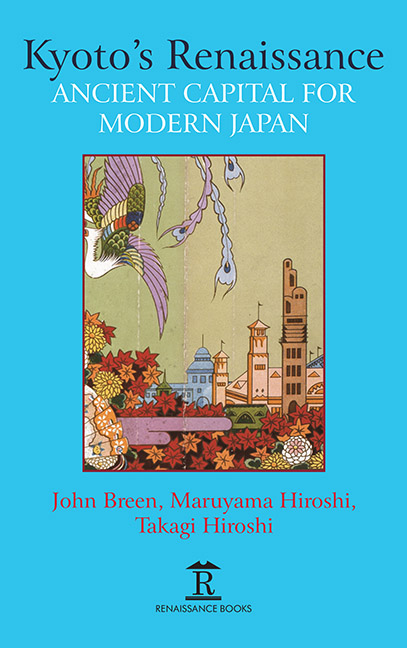Chapter 7 - Transforming Early Meiji Kyoto: Towards an“Industrial City”
Published online by Cambridge University Press: 30 April 2022
Summary
INTRODUCTION
KYOTO IN THE early Meiji period was a city with a population of just under 280,000 people. Owing to its large size, this city could hardly be described as having a single character; it was inevitably enough a city with many faces. In the latter part of the Edo period, Kyoto was historically famous as the city where the emperor resided. It was also the city which produced Nishijin-ori weaving, yūzen dyes, Kiyomizu-yaki pottery and other arts and crafts. At the same time, Kyoto was a religious center boasting the largest number of temples and shrines in the land, and a tourist center, too, where people came to visit not only temples and shrines, but such scenic spots such as Arashiyama; they even had access to the vicinity of the imperial palace. These diverse traits of the city came to be interrelated with yet another. Indeed, Kyoto gained recognition as a multi-faceted hub of arts and crafts in the estimation of foreign visitors. For example, Archduke Franz Ferdinand, heir-presumptive to the Austrian throne, stopped over in Japan during his world tour of 1893, and visited Kyoto in August of that year. He wrote in his travel journal that, “This city has enjoyed an unrivalled reputation as a major center of splendid arts and crafts, namely, silk fabrics, metal artefacts and ceramics.” This perception was the same within Japan, too. Kyoto's character as a religious center, home to the head temples and of Buddhist sects made the city a major producer of household Buddhist altars and Buddhist religious objects. In other words, Kyoto was not simply a sightseeing area for visiting temples and shrines; it was also a city integrally linked to industry.
In 1869, the emperor and his court left Kyoto to take up residence in the new imperial capital of Tokyo – as it became known – and, when they did, Kyoto's population plummeted. At the time, it was thought that the best way to revitalize Kyoto was to re-imagine it as an industrial center. It was on this account, for example, that plans were eventually put in place to generate hydroelectric power by diverting water into the city via a canal from Lake Biwa in neighboring Shiga Prefecture. I shall refer to this engineering project again later.
- Type
- Chapter
- Information
- Kyoto's RenaissanceAncient Capital for Modern Japan, pp. 169 - 188Publisher: Amsterdam University PressPrint publication year: 2020



